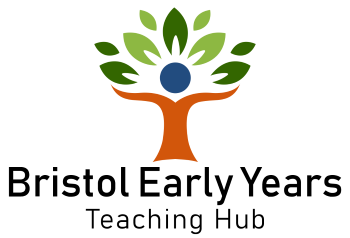
Jenna Jefferies works for the Bristol Early Years Portage and Inclusion team. She has over 17 years’ experience in early years and is committed to being a better ally to the neurodivergent and disabled community. Jenna has devoted her career towards advocating for inclusive practice by working with the National Autistic Society, NASEN and, most recently, as part of the Bristol delivery and assessment team for the Level 3 SENCO qualification.
Teaching Self-Advocacy Skills to Our Young Children Today to Change the Societal Attitudes of Tomorrow by Jenna Jefferies
In this blog, we explore changing narratives for children with disabilities and how to empower them to advocate for themselves. For too long, compliance has been the only goal for children with developmental differences and needs in education and society. Neurodivergent and disabled children have learned to suppress their traits, differences, and individual bodily signals, conforming to societal expectations and instructions.
Self-advocacy and children’s rights
Self-advocacy can be described as standing up for yourself and representing your own views and interests. It involves communicating your wants and needs. All children have a right to have their voices heard and needs recognised and met. Children’s rights to be heard on matters which affect them is embedded into global and national policy and guidance (UNICEF, 1989).
One of the underlying principles of the Special Educational Needs and/or Disabilities (SEND) Code of Practice (CoP) (Department for Education (DfE), 2015) is for children to be involved in decision-making about their individual support. However, with no clear guidance on how to do this, it can often become a tokenistic attempt or missed entirely, particularly when working with non or minimally speaking children and young people.
Ideologies in policy can become misinterpreted or lose significance in translation from policymakers to educational providers (Devarakonda, 2013). In addition, children with developmental differences or disabilities face additional risk of exploitation and are twice as likely to have a child protection plan (Department for Education, 2024; Safeguarding Network, 2024).
Research from autistic adults indicates that the early intervention they had been subjected to as children, which saw forceful physical prompting, communication attempts ignored, and communication methods removed completely, has had profound and lasting effects on their mental health and well-being (Kirkham, 2017). This highlights the growing importance of children not only learning how to advocate for themselves but also feeling confident, empowered and equipped with the skills to do so.
Presuming competence
Children with developmental differences and needs have long lived in the shadow of the medical model of disability and have been defined by diagnosis. The medical model of disability has contributed towards ableist views of developmental differences, suggesting the capabilities of these children are less than others (Department for Education, 2024). Therefore, it is unsurprising that children are often passive recipients in their own individual education plans or education, health and care plan assessments (Franck, 2023). In the DfE Supporting Individual Differences and Needs module, educators are encouraged to always presume competence. This involves adopting a view that considers all children capable and proficient learners who can express their thoughts and wishes even if the spoken word is not their preferred method of communication. In doing so, we can begin to redefine perceptions of children with individual differences and needs within education and society.
“When a child has developmental differences and needs, there can be a tendency to focus on what a child cannot do, which can lead to you overlooking the ways in which they are competent.”
– Department for Education, 2024
In recent years, we have witnessed the Neurodiversity movement slowly begin to shift the paradigm from deficit-focused to celebratory-driven (Pen Green Centre for Children and Families, 2018). The DfE Supporting Individual Differences and Needs module adopts a neuro-informed approach throughout and provides an opportunity for us to think critically about the role of the early years educator in creating an ethos of inclusion. This reflects the social model of disability which places the emphasis on identifying barriers to participation rather than viewing the individual person as a problem to be fixed. The social model also aims to challenge prejudice, attitudes, and perceptions. Recent studies from the Neurodiverse Self Advocacy Forum found changing attitudes within society was voted one of the top priorities for neurodivergent groups (Neurodiverse Self Advocacy, 2024).
Explicit teaching of self-advocacy skills
To continue redefining perceptions of young children with developmental differences and/or disabilities, we must prioritise teaching self-advocacy skills and create spaces where children feel validated. Educators play a vital part in the success of self-advocacy for young children, and the response the child receives will be key to either preventing or encouraging the child to speak out in future (Hammond, 2024).
We can begin by teaching self-awareness using resources for self-regulation and executive function from the Education Endowment Foundation. Research suggests that mindfulness, including movement and breathing, can alert children to physical sensations, thoughts, and feelings within themselves. Once children are self-aware, they can begin learning and setting boundaries.

The EEF approaches to PSED also show examples of practice and how educators can connect with children non-verbally through movement.
Educators should respond to communication in whatever form it takes. For example, children may say something like ‘it’s too loud’ or use body language to express their discomfort, such as backing away or pulling their hands back. Emotionally available adults who are open and responsive to children’s emotional needs are crucial in supporting children’s attempts to exercise their rights.
Educators should teach self-advocacy to all children to promote authentic, inclusive practice. Practices include visual systems, tools, or aids that use images or symbols to help children communicate their feelings. For instance, a child might use a visual system to indicate, ‘I need to move,’ ‘I’m not okay,’ or ‘I need help.’
This film from The EEF Evidence Store demonstrates how educators can promote non-verbal communication to enable the child’s voice at the earliest stage.
As educators, we should actively encourage children’s right to say ‘no’ and model effective communication methods. Using language such as ‘I don’t like it’ or ‘I need space’ in play scenarios with peers can inspire children to do the same. Natural conflicts will arise; these are perfect opportunities to demonstrate facial expression and intonation to model expression and support with visuals (Piscitelli, 2024).
“Listening to young children can’t be rushed, time needs to be spent observing and understanding each child in the setting.” (Department for Education, 2024)
“Listening to young children can’t be rushed, time needs to be spent observing and understanding each child in the setting.”
– Department for Education, 2024
Conclusion
Children with individual needs and differences deserve to have their voice heard and as practitioners, we have a duty to actively listen. Through presuming competence, we can begin to challenge assumptions within society to continue shifting the narrative created by the neurodiversity movement. Beyond this, we can continue to advocate for our neurodivergent and disabled children, but we can take this further by equipping children with the skills to advocate for themselves. In turn, we will raise a new generation of children who are strong and confident in getting their needs met. This will create the society of tomorrow that is positive about children with individual needs and differences and holds them in high regard.
Other Links and References
Department for Education (2015). Special educational needs and disability code of practice: 0 to 25 years Statutory guidance for organisations which work with and support children and young people who have special educational needs or disabilities. London: Department for Education.
Department for Education (2024) “Module 8: Supporting Individual Differences and Needs,” Early Years Child Development Training. Online. Department for Education.
Devarakonda, C. (2013) Diversity and Inclusion in Early Childhood: An Introduction. London. Sage.
Early Years Evidence Store | EEF (educationendowmentfoundation.org.uk)
EEF | Self-Regulation and Executive Function
EEF | Personal Social and Emotional Development
Franck, K. (2023) ‘Special education documents and young children’s right to be heard’.Journal of Research in Special Educational Needs, (24), pp.123-132. Available at: https://doi.
org/10.1111/1471-3802.12620
Hammond, E. neurowild_ (Instagram). 27 November. Available from (@neurowild_) • Instagram photos and videos. (Accessed 17 December 2024).
Kirkham, P. (2017). ‘The line between intervention and abuse’ – autism and applied behaviour analysis. History of the Human Sciences, 30(2), pp.107-126. Available at: https://doi.org/10.1177/0952695117702571 (Accessed: 20 December 2024).
Neurodiverse Self Advocacy (No year). What is Self Advocacy. Available from: Neuro Diverse Self Advocacy Forum (Accessed: 17 December 2024).
Pen Green Centre for Children and Families (2018) A celebratory approach to SEND assessment in the early years. Department for Education.
Piscitelli, K. bohospeechie (Instagram). 17 August. Available from Katja Piscitelli | Echolalia & Gestalt Language (@bohospeechie) • Instagram photos and videos. (Accessed 17 December 2024).
Safeguarding Network (2024) Specific risks for children with SEND. Available at: Specific Risks for Children with SEND | Safeguarding Network (Accessed: 17 December 2024).
UNICEF (1989) The United Nations Convention on the Rights of the Child. London: UNICEF UK. Available at: https://downloads.unicef.org.uk/wp-content/uploads/2010/05/UNCRC_united_nations_convention_on_the_rights_of_the_child.pdf?_ga=2.134191495.825287053.1518863559-1899169067.1506869585 (Accessed: 17 December 2024).



